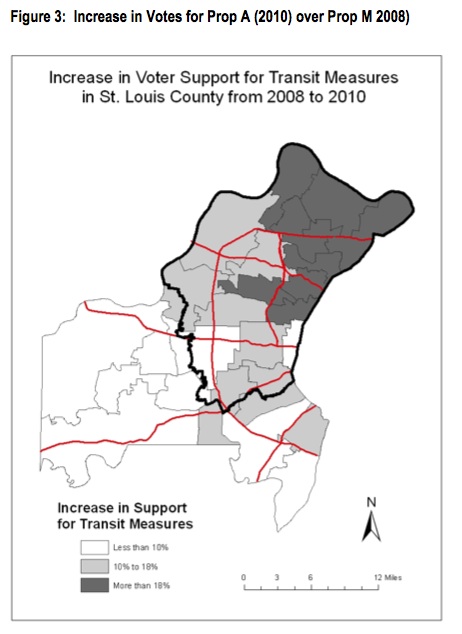Readers Glad To See Bike Station & Shop Downtown

The poll (& post) last week was about downtown’s newest businesses – a bike station and bike shop:
Q: Will you use the new downtown bike station & shop?
- I won’t use either, but I’m glad to see they are opening 49 [32.03%]
- I’ll use the bike shop, but not the bike station 24 [15.69%]
- I’ll use both the station and shop 20 [13.07%]
- I won’t use either 14 [9.15%]
- I don’t live in St. Louis 14 [9.15%]
- I might use one or both 13 [8.5%]
- Other answer… 11 [7.19%]
- Unsure at this time 6 [3.92%]
- I’ll use the bike station, but not the bike shop 2 [1.31%]
The bike station & shop are clearly appealing to many readers, but the numbers of users is limited due to the niche nature.
Here are the eleven other answers provided by readers:
- Would use it if I worked Downtown
- the city sucks and steals ideas from young people
- Bike lanes are a waste of good driving lanes.
- I’ll drive my car and arrive to work clean and on time.
- I don’t live in downtown STL anymore so I no longer need a bike to commute.
- Already signed up as a member!
- I no longer live in STL, but I’ll promote both to family/friends as always.
- don’t use downtown
- nope
- I’d use it every day if I worked in the area.
- Wish there were one near Barnes
The bike station had a soft opening on the 21st. Â At 10am tomorrow both the station and Urban Shark bike shop will hold their grand openings.

From a September 8, 2010 press release:
The City of St. Louis applied for a Federal Energy Efficiency and Conservation Block Grant from the Department of Energy to specifically fund this project. These funds were designated for energy-saving projects, and had to be approved by the Department of Energy. From the grant the City received, $181,600 will cover the costs to buy the lockers, interior bike racks, and fund the operational costs of the Downtown Bike Center’s first two years. The Downtown Community Improvement District and other partners will provide additional funding.
“We are building a City that provides an attractive way of life. After World War II, the car was a symbol of freedom. For some people today, it is just the opposite,†said Mayor Slay. “We look forward to working with the Downtown St. Louis CID and Loftworks to ensure the long-term success of this public bike center and the City’s cycling initiative.â€
“This project will help cement Downtown as a walkable, livable neighborhood where you can rely on alternatives to the car,†said Maggie Campbell, Partnership President and CEO. “We are thrilled to be working with the community to realize this sustainable investment.â€
“Since vehicle emissions contribute about a third of the Greenhouse Gasses into the environment, we wanted to use these ARRA Stimulus funds to promote an alternative mode of transportation,†said Catherine Werner, the City’s Sustainability Director. “By enabling St. Louis commuters to choose cycling as an affordable and attractive option, the City is demonstrating its commitment to being a healthy and sustainable community.â€
Additional information:
- http://www.downtownbicyclestation.com
- Twitter.com/STLBicycleSTA
- Facebook.com/pages/Downtown-Bicycle-Station/197561216927270
- Urban Shark 1009 Locust St.
– Steve Patterson




